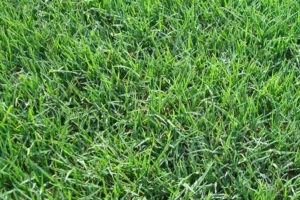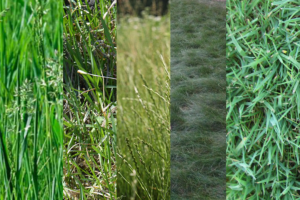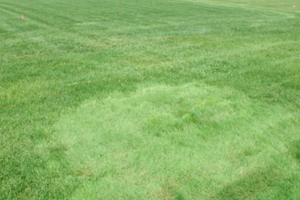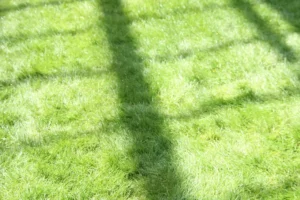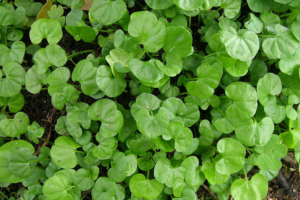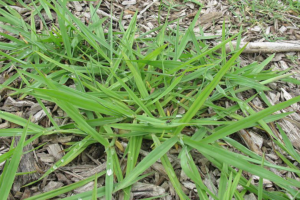
Introduction
Welcome to our comprehensive guide on Kentucky Bluegrass, one of the most popular and versatile grass species for lawns across the United States. Known for its lush, carpet-like appearance and hardy nature, Kentucky Bluegrass has become a staple in landscapes ranging from home lawns to expansive golf courses.
Despite its name, Kentucky Bluegrass is more than just a staple in the Bluegrass State. Its adaptability and resilience have favored it for homeowners and lawn care professionals across various climates and soil conditions. Whether you’re a seasoned gardener or a beginner looking to cultivate a vibrant, green lawn, Kentucky Bluegrass offers a blend of beauty and durability that few other grass species can match.
This guide will delve into everything you need to know about Kentucky Bluegrass. From its rich history and unique characteristics to planting techniques, maintenance practices, and numerous benefits, we aim to provide a thorough understanding of this remarkable grass variety. We will also address common questions and provide comparisons with other grass types to help you make an informed decision for your lawn care needs.
So, whether you’re considering Kentucky Bluegrass for your new lawn or looking to improve your existing one, this guide is designed to equip you with the knowledge and confidence to create a lawn that’s pleasing to the eye but also healthy and sustainable. Let’s embark on this green journey together!
History and Origin of Kentucky Bluegrass
Kentucky Bluegrass, scientifically known as Poa pratensis, has a history that might surprise many. Despite its name, this grass species did not originate in Kentucky or is native to the United States. Kentucky Bluegrass is a European import. It hails from the temperate and cool regions of Europe, northern Asia, and the mountains of Algeria and Morocco.
The grass was introduced to North America by early European settlers in the 1600s, who brought it along for its excellent pasture qualities. Over time, it spread across the continent, mainly thriving in Kentucky’s fertile, limestone-rich soils. Here, the grass gained its name, not for its origin but for the state where it flourished and became a significant part of the landscape.
The popularity of Kentucky Bluegrass in the United States can be attributed to several factors. Its ability to withstand various climates, its resilience to heavy foot traffic, and its rich emerald-green color have made it a favorite choice for lawns, parks, and athletic fields. Moreover, its dense, mat-like growth habit gives lawns a smooth, carpet-like appearance that’s highly sought after by homeowners and landscape professionals alike.
Characteristics of Kentucky Bluegrass
Appearance
Kentucky Bluegrass is easily recognizable by its boat-shaped leaf tips and rich, emerald-green to blue-green color. It grows in a unique “bunch-type” pattern, creating a dense, carpet-like turf. When left to grow, it can produce a small, inconspicuous flower that adds charm.
Growth Habits and Seasonal Changes
Kentucky Bluegrass is a cool-season grass, which means it experiences active growth during the more excellent parts of the year, specifically in the early spring and fall. During the hot summer months, the grass may enter a dormant state, turning brown until temperatures cool, but it will quickly regain its green color with adequate watering and care.
Soil and Climate Preferences
Kentucky Bluegrass prefers well-drained, fertile soils with a pH between 6.0 and 7.0. While it thrives in full sun, it can tolerate light shade. It is a cool-season grass that does best in regions with cool, humid summers and cold winters. However, its adaptability allows it to grow in various climates, from the northern U.S. states to certain transitional zones.
Description of Kentucky Bluegrass Appearance
Kentucky Bluegrass is renowned for its beautiful, lush appearance that adds a touch of elegance to any landscape. Its leaves are smooth and spear-like, tapering to a sharp point at the tip. The leaf blades, about 1/8 to 1/4 inch wide, have a unique boat-shaped tip, a characteristic feature that helps identify this grass species.
The color of Kentucky Bluegrass ranges from a rich emerald green to a deeper blue-green, giving it a vibrant and appealing look throughout its growing season. The grass forms a dense, carpet-like turf, providing a smooth and uniform lawn. Kentucky Bluegrass produces a small, three-flowered spikelet that adds a subtle charm to its overall appearance when allowed to flower.
Growth Habits and Seasonal Changes
As a cool-season grass, Kentucky Bluegrass enjoys its most vigorous growth during the more excellent parts of the year, particularly in the early spring and fall. During these periods, you’ll notice rapid growth and a deepening of its green color.
In the hot summer months, Kentucky Bluegrass tends to enter a period of dormancy, especially in areas of intense heat and drought. During this time, the grass may turn a brownish color. However, this is a natural survival mechanism, and the grass will revive and regain its green hue with the return of cooler temperatures and adequate watering.
Soil and Climate Preferences
Kentucky Bluegrass is quite adaptable, but it has its preferences regarding soil and climate. It thrives best in well-drained, fertile soils with a pH between 6.0 and 7.0. It can tolerate various soil types, including clay, loam, and sandy soils, as long as they are well-drained.
In terms of climate, Kentucky Bluegrass prefers regions with cool, humid summers and cold winters, typical of the northern United States. However, it can also tolerate transitional zones where temperatures mix cool and warm.
Planting Kentucky Bluegrass
When to Plant
The best time to plant Kentucky Bluegrass is during its peak growth periods in the spring and fall. Planting during these times allows the grass to establish itself before the heat of summer or the cold of winter.
Soil Preparation
Before planting, it’s essential to prepare the soil. This involves removing grass or weeds, loosening the soil with a garden tiller, and improving the soil structure with organic matter. The soil should also be leveled and lightly compacted to provide a firm seed base.
Sowing the Seeds
Aim for a seeding rate of 2 to 3 pounds per 1,000 square feet when sowing Kentucky Bluegrass seeds. The seeds should be spread evenly over the soil surface and then lightly raked in to ensure good seed-to-soil contact. After sowing, the area should be watered gently but thoroughly and kept consistently moist until the seeds germinate.
Maintaining Kentucky Bluegrass
Maintaining a Kentucky Bluegrass lawn involves regular watering, fertilizing, mowing, and pest control. With the proper care, your Kentucky Bluegrass lawn can remain lush and vibrant throughout its growing season.
Watering
Kentucky Bluegrass has moderate to high water requirements. During active growth periods, it typically requires 1 to 1.5 inches of water per week, either from rainfall or irrigation. Watering should be done early in the morning to reduce evaporation and prevent the growth of diseases. During periods of drought or heat, the grass may go dormant and turn brown, but it will recover once regular watering resumes.
Fertilizing
Fertilizing is critical to maintaining the health and color of your Kentucky Bluegrass lawn. The grass benefits from a balanced lawn fertilizer that contains nitrogen, phosphorus, and potassium. Nitrogen is essential for promoting lush, green growth. Fertilizing should be done in the spring and fall when the grass is actively growing. Avoid fertilizing during the hot summer months, as this can stress the grass and promote the growth of weeds.
Mowing
Regular mowing helps maintain the dense, carpet-like appearance of Kentucky Bluegrass. The grass should be mowed to a height of about 2.5 to 3.5 inches, and no more than one-third of the grass blade should be removed at a time. Keeping the grass at this height helps promote profound root growth and can help the lawn resist pests and diseases. You can use a sharp mower blade to prevent tearing the grass blades.
Pest and Disease Control
Kentucky Bluegrass can be susceptible to certain pests and diseases like lawn grass. Common issues include lawn grubs, leaf spots, and rust. Regular monitoring can help detect these problems early. If necessary, most lawn pests can be controlled with appropriate lawn care practices and pest control products. Similarly, proper watering, mowing, and fertilization practices can prevent or treat many lawn diseases.
Following these maintenance practices lets you keep your Kentucky Bluegrass lawn looking its best throughout the growing season. Remember, a well-maintained lawn not only adds beauty to your landscape but also provides a healthy space for outdoor activities.
Pest and Disease Management
While Kentucky Bluegrass is a hardy and resilient grass species, it can still be susceptible to certain pests and diseases. Effective management involves early detection, appropriate treatment, and preventive measures to avoid these issues.
Common Pests
Several pests can pose a threat to Kentucky Bluegrass. These include lawn grubs, such as the larvae of Japanese beetles, which feed on the grass roots and can cause patches of the lawn to turn brown and die. Other pests include sod webworms, chinch bugs, and billbugs.
Control methods for these pests vary. For lawn grubs, beneficial nematodes or specific insecticides can be applied. For other pests, appropriate insecticides can also be used. However, it’s essential to correctly identify the pest before applying any treatments.
Common Diseases
Kentucky Bluegrass can also be affected by various diseases. These include leaf spot, which causes brown or black spots on the grass blades, and rust, which results in orange-red spores that can cover the lawn. Other diseases include powdery mildew, dollar spot, and snow mold.
Most of these diseases can be managed by maintaining proper lawn care practices. This includes watering early in the day so the grass can dry before nightfall, mowing with a sharp blade to avoid injuring the grass and aerating the lawn to improve air circulation. Fungicides can also be used if necessary but should be considered a last resort.
Prevention
Prevention is the best approach to pest and disease management. This involves maintaining a healthy lawn through proper watering, mowing, and fertilization. A healthy lawn is more resistant to pests and diseases and can recover quickly if problems arise.
Regular lawn monitoring can also help detect any issues early before they become serious. If you notice any unusual changes in your lawn, such as brown patches or spots on the grass blades, it’s essential to identify the cause and take appropriate action as soon as possible.
Every lawn is unique and may require different care practices depending on its specific conditions. By understanding the needs of your Kentucky Bluegrass lawn, you can provide the best care and enjoy a beautiful, healthy lawn for years to come.
Benefits of Kentucky Bluegrass
Kentucky Bluegrass is more than just a pretty face in turf grasses. Its popularity among homeowners and lawn care professionals is due to many benefits extending beyond its aesthetic appeal. Here are some of the critical benefits of choosing Kentucky Bluegrass for your lawn:
Aesthetic Appeal
One of the most apparent benefits of Kentucky Bluegrass is its beauty. Its lush, dense growth and vibrant green color make it a standout choice for a visually pleasing lawn. Kentucky Bluegrass adds elegance and charm to any landscape, whether the centerpiece of a residential yard or gracing a public park.
Durability and Resilience
Kentucky Bluegrass is known for its hardiness. It can withstand various climates and is remarkably resilient to cold winters, making it an excellent choice for northern and transitional climates. Additionally, it can recover from damage due to its rhizomatous growth habit, which allows it to spread and fill in bare spots.
Tolerance of Foot Traffic
If you have children or pets who love to play outdoors or if you frequently entertain guests in your yard, Kentucky Bluegrass is an excellent choice. It has a high tolerance for foot traffic and can quickly recover from wear and tear, maintaining its lush, carpet-like appearance.
Environmental Benefits
Like all plants, Kentucky Bluegrass plays a role in improving the environment. It helps to reduce soil erosion, improve air quality by absorbing carbon dioxide, and contribute to cooling the surrounding area through transpiration. It also provides a habitat for various microorganisms that contribute to soil health.
Health Benefits
A well-maintained Kentucky Bluegrass lawn can also contribute to your health and well-being. Spending time in a green outdoor space can reduce stress, promote physical activity, and provide a place for relaxation and recreation.
In conclusion, Kentucky Bluegrass offers a blend of aesthetic and practical benefits, making it a top choice for lawns. Kentucky Bluegrass is a versatile and rewarding option whether you’re looking for grass that can withstand your kids’ energetic play or want a beautiful, green space to relax.
Kentucky Bluegrass vs. Other Types of Grass
When choosing suitable grass for your lawn, it’s essential to consider how different types compare. Here’s how Kentucky Bluegrass stacks up against some other popular lawn grasses:
Kentucky Bluegrass vs. Perennial Ryegrass
Perennial Ryegrass is another cool-season grass known for its quick germination and establishment rate. However, it lacks the spreading ability of Kentucky Bluegrass, which can fill in bare spots and recover from damage more effectively. While Perennial Ryegrass can handle high foot traffic like Kentucky Bluegrass, it has a different cold tolerance, making Kentucky Bluegrass a better choice for northern climates.
Kentucky Bluegrass vs. Tall Fescue
Tall Fescue is a durable, drought-tolerant grass that thrives in many areas like Kentucky Bluegrass. However, it has a clumping growth habit that results in a less uniform lawn. While Tall Fescue requires less watering and maintenance, Kentucky Bluegrass offers a more lush, carpet-like appearance and a softer texture underfoot.
Kentucky Bluegrass vs. Bermuda Grass
Bermuda Grass is a warm-season grass that excels in hot, sunny climates where Kentucky Bluegrass might struggle. However, Bermuda Grass goes dormant and turns brown in cooler weather, while Kentucky Bluegrass can maintain its green color into the fall and even early winter. Additionally, Kentucky Bluegrass has a more fine-textured, dense growth habit that many homeowners prefer.
Kentucky Bluegrass vs. Zoysia Grass
Zoysia Grass is a warm-season grass known for its heat and drought tolerance. While it can withstand warmer conditions than Kentucky Bluegrass, it has a slower growth rate and takes longer to establish. Zoysia also turns brown after the first frost, while Kentucky Bluegrass can stay green well into the fall.
In conclusion, while each type of grass has its strengths, Kentucky Bluegrass offers a unique combination of beauty, resilience, and adaptability. Its ability to thrive in various conditions and its lush, carpet-like appearance make it a versatile choice for many homeowners.
Frequently Asked Questions about Kentucky Bluegrass
This section addresses some of the most common questions about Kentucky Bluegrass. These answers should provide a quick reference for anyone considering this type of grass for their lawn.
Is Kentucky Bluegrass suitable for home lawns?
Yes, Kentucky Bluegrass is an excellent choice for home lawns. Its dense, carpet-like growth provides a beautiful, smooth lawn, and its high tolerance for foot traffic makes it an excellent option for families and pet owners.
How often should I water Kentucky Bluegrass?
Kentucky Bluegrass typically requires 1 to 1.5 inches of water per week, either from rainfall or irrigation, during active growth periods. Watering deeply and infrequently is best, encouraging more profound root growth.
Does Kentucky Bluegrass spread?
Yes, one of the critical characteristics of Kentucky Bluegrass is its ability to spread via underground stems known as rhizomes. This allows the grass to fill in bare spots and recover from damage, contributing to its dense, uniform appearance.
Can Kentucky Bluegrass grow in the shade?
While Kentucky Bluegrass prefers full sun, it can tolerate light shade. However, the grass may become thin and less vigorous in heavily shaded areas.
How tall does Kentucky Bluegrass grow?
Kentucky Bluegrass can grow to 18 to 24 inches tall if left un-mowed. However, home lawns are typically mowed to a height of 2.5 to 3.5 inches.
Does Kentucky Bluegrass stay green in winter?
Kentucky Bluegrass is a cool-season grass, which means it stays green in the fall and can even maintain its color into early winter in some regions. However, like all grasses, it will go dormant and turn brown during prolonged periods of cold or drought.
What type of soil is best for Kentucky Bluegrass?
Kentucky Bluegrass prefers well-drained, fertile soils with a pH between 6.0 and 7.0. It can tolerate various soil types, including clay, loam, and sandy soils, as long as they are well-drained.
Remember, every lawn is unique, and the specific care requirements for your Kentucky Bluegrass may vary based on your local climate, soil conditions, and other factors. Monitor your lawn closely and adjust your care practices to keep your grass healthy and vibrant.
Conclusion
Kentucky Bluegrass, with its lush, carpet-like appearance and hardy nature, has long been a favorite choice for lawns across the United States. Its ability to thrive in various climates and soil conditions, its resilience to foot traffic, and its beautiful green hue makes it a versatile and rewarding option for any homeowner.
In this guide, we’ve explored the history, characteristics, planting, and maintenance practices of Kentucky Bluegrass. We’ve also delved into its benefits and compared it with other popular types of lawn grass. We have aimed to provide you with a comprehensive understanding of this remarkable grass variety and equip you with the knowledge to create a beautiful, healthy lawn.
Whether you’re considering Kentucky Bluegrass for your new lawn or looking to improve your existing one, remember that a well-maintained lawn not only adds beauty to your landscape but also provides a healthy space for outdoor activities. With the proper care, your Kentucky Bluegrass lawn can provide you with years of enjoyment.
Thank you for joining us on this green journey. Here’s to the joy of a beautiful lawn!

Bob Green, a passionate lawn care enthusiast with over two decades of landscaping experience, is this website’s proud owner. His vast knowledge of horticulture and dedication to helping homeowners maintain beautiful lawns are reflected in the valuable content he shares on his platform. John has always been interested in Agrostology.









